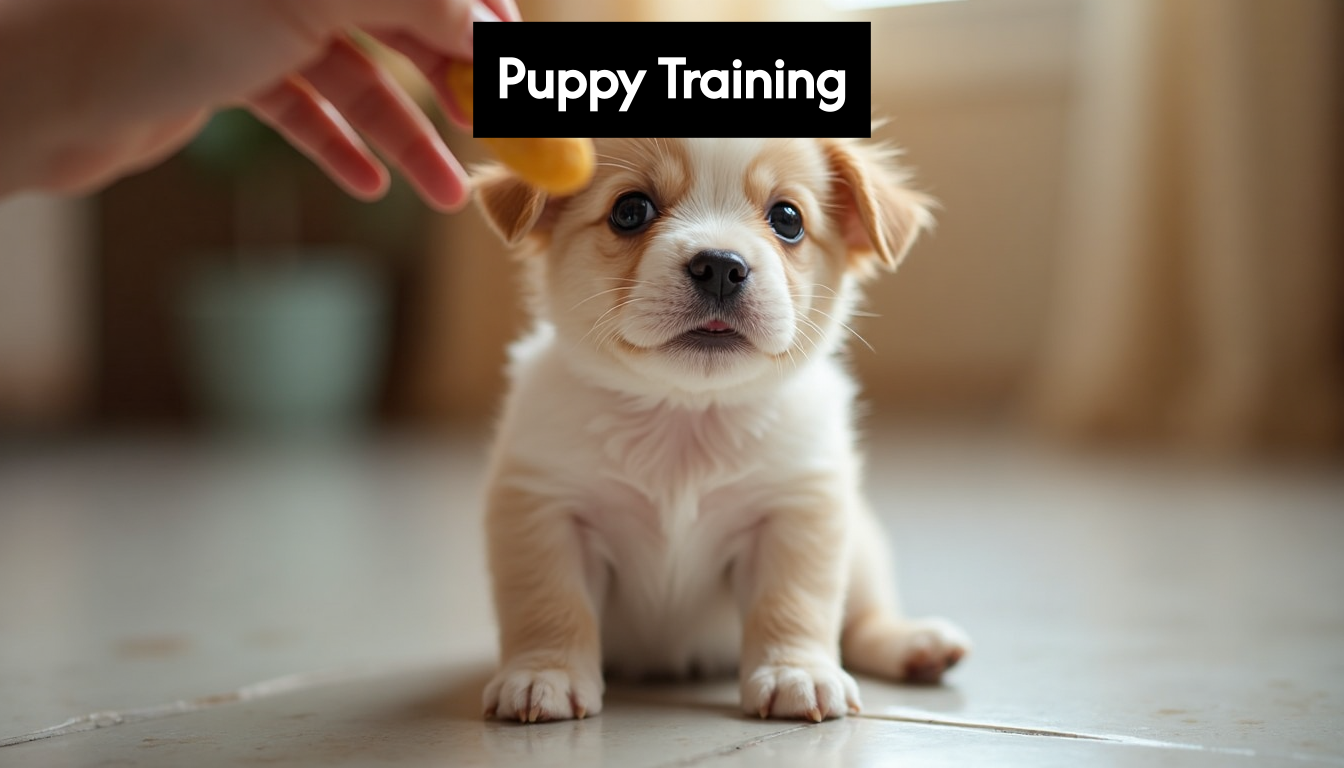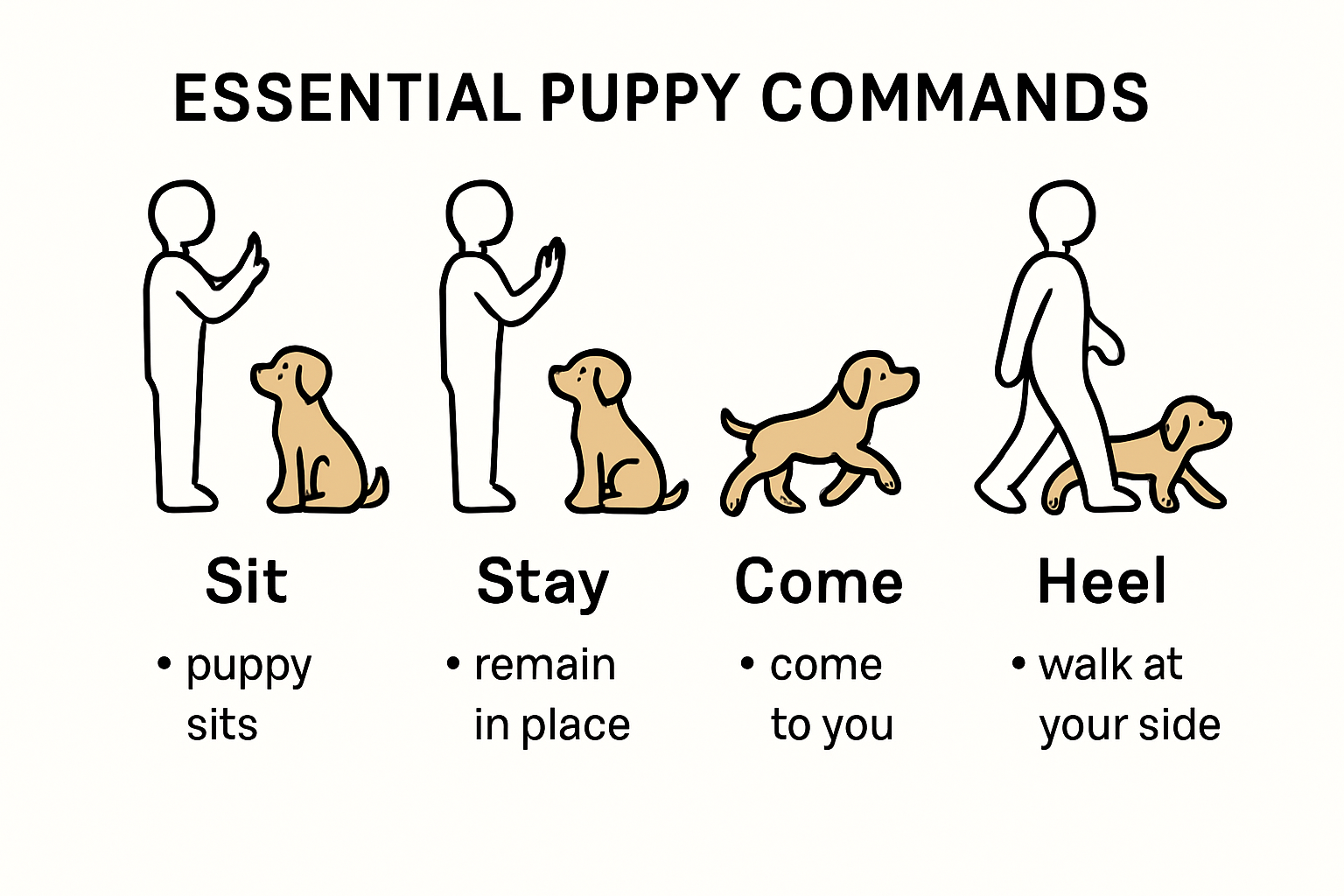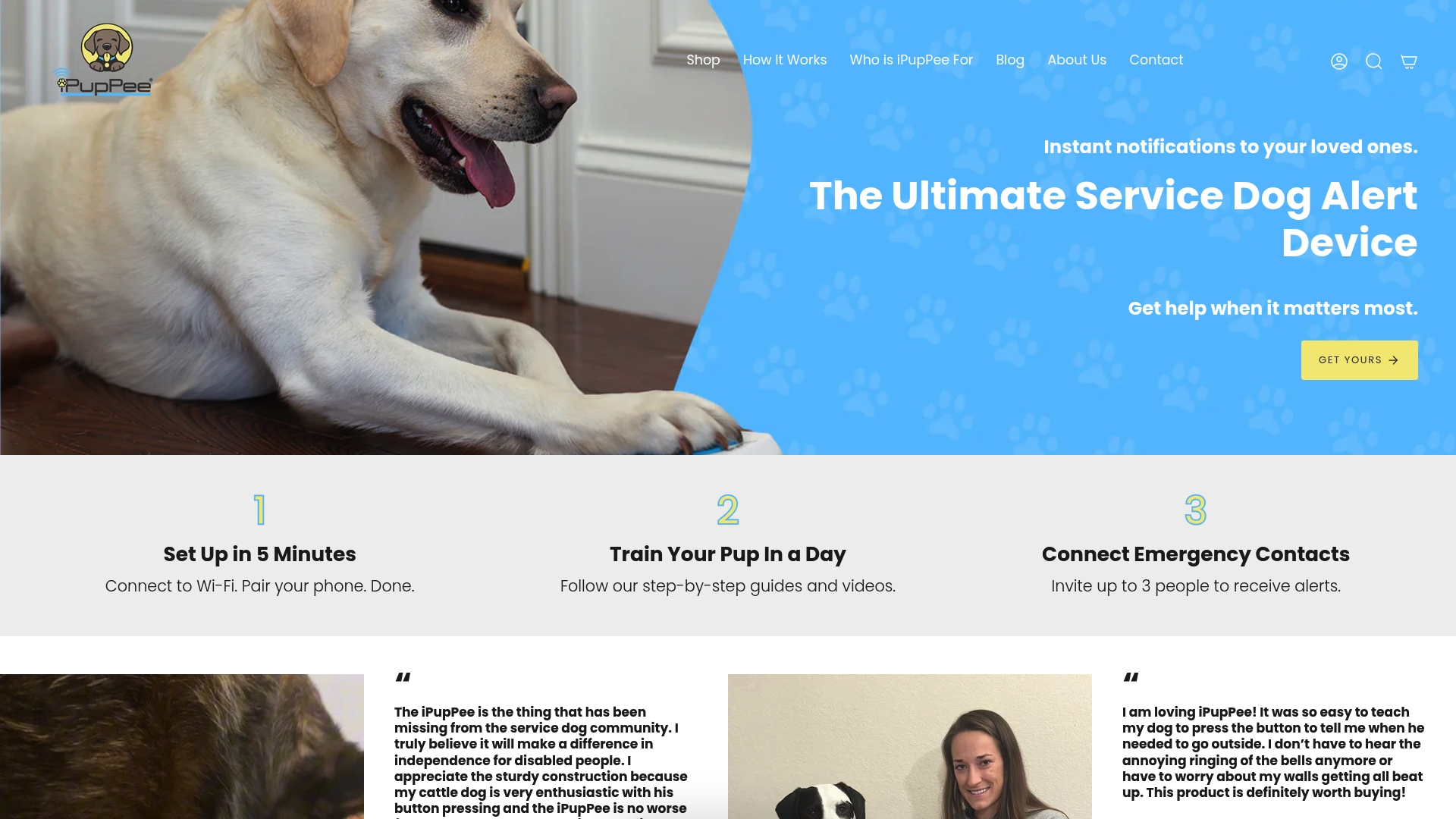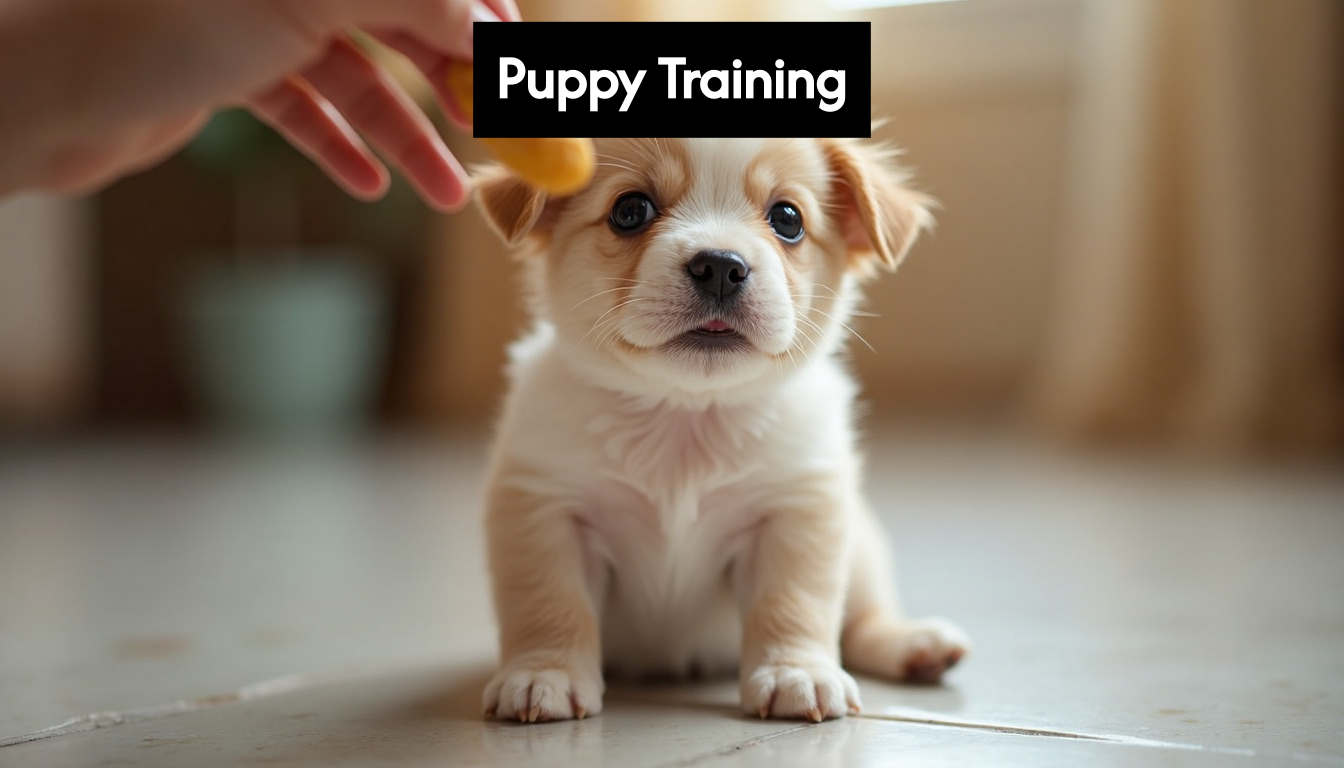
Training your puppy is not just a duty; it’s a chance to shape a well-adjusted companion. Studies show that starting training between 3 and 16 weeks can greatly reduce future behavioral issues. But here’s the surprise: puppy training is not just about commands and sitting. The greatest benefits come from building a strong bond through socialization and positive interactions. This approach makes the journey enjoyable for both you and your puppy.
Table of Contents
- Start Puppy Training Early
- Essential Commands For Puppies
- House Training Your Puppy Successfully
- Troubleshooting Common Puppy Habits
Quick Summary
| Takeaway | Explanation |
|---|---|
| Start Training Early | Initiate training between 3 and 16 weeks of age to foster early socialization and learning, which significantly reduces future behavioral problems. |
| Essential Commands | Teach fundamental commands like sit, stay, and come as the foundation for effective communication and safety, with consistency being crucial for success. |
| House Training Strategy | Establish a regular potty routine and use positive reinforcement for successful housetraining, while being prepared for accidents and maintaining a consistent schedule. |
| Address Common Behaviors | Recognize and manage biting, excessive barking, and destructive chewing through positive reinforcement, redirection, and understanding the underlying causes of these behaviors. |
| Professional Guidance | Consider enrolling in professional puppy classes for structured training and socialization opportunities, tailored to your puppy’s unique learning style. |
Start Puppy Training Early
Training your puppy early is crucial for developing a well-behaved, confident, and socially adjusted dog. The first few months of a puppy’s life represent a critical window for learning and behavioral development that can shape their entire future.
The Critical Window of Puppy Development
Puppies are most receptive to learning and socialization between 3 and 16 weeks of age. During this period, their brains are like sponges, rapidly absorbing experiences and forming neural connections that will influence their behavior for years to come. Research from the American Veterinary Society of Animal Behavior confirms that early training can significantly reduce the likelihood of future behavioral problems.
According to a comprehensive study, puppies trained before 6 months of age showed markedly reduced risks of developing aggression, compulsive behaviors, and destructive tendencies. This finding underscores the importance of starting training as early as possible. Waiting too long can make behavioral correction more challenging and less effective.
Building a Strong Foundation
Early training goes beyond basic obedience. It’s about creating a robust communication system between you and your puppy. This means teaching fundamental skills like:
- Socialization: Exposing your puppy to various people, animals, sounds, and environments
- Basic commands: Teaching sit, stay, come, and heel
- Potty training: Establishing consistent bathroom routines
- Bite inhibition: Learning to control mouth pressure during play
Consistent, positive reinforcement during these early months helps puppies understand boundaries, build confidence, and develop trust. Veterinary behaviorists emphasize that puppies acquired before 12 weeks and given structured training have significantly lower chances of developing fear, anxiety, and destructive behaviors.
Professional Guidance and Ongoing Learning
While home training is essential, professional puppy classes can provide structured learning environments. These classes offer multiple benefits: controlled socialization, expert guidance, and opportunities for your puppy to interact with other dogs. A professional trainer can help you understand your puppy’s unique learning style and address potential behavioral challenges before they become ingrained.
Interestingly, scientific research suggests that the specific timing of training between 3 and 6 months is less critical than ensuring consistent, positive training occurs during this developmental window. This means you have flexibility in your approach, but the key is to start and remain consistent.
Remember, every interaction is a training opportunity. From the moment your puppy comes home, you’re teaching them about the world, your expectations, and how to be a well-adjusted companion. Patience, consistency, and positive reinforcement are your most powerful tools in raising a confident, obedient, and happy dog.
Essential Commands for Puppies
Teaching essential commands is the backbone of effective puppy training. These fundamental instructions not only establish communication between you and your puppy but also ensure their safety and create a framework for more advanced training in the future.
Foundational Commands Every Puppy Needs to Learn
The most critical commands form the core of your puppy’s behavioral training. Research from professional dog trainers emphasizes the importance of consistency when teaching these fundamental instructions. The key commands include:
- Sit: A basic command that helps control impulses and provides a starting point for more complex instructions
- Stay: Critical for preventing potential dangerous situations and developing self-control
- Come: Essential for recall and ensuring your puppy’s safety in various environments
- Down: Helps manage excitement and provides a calm positioning method
- Heel: Teaches leash walking and prevents pulling
Scientific studies indicate that early command training, particularly before 4 months of age, significantly impacts a dog’s future behavioral development. This underscores the importance of starting these training sessions early and maintaining consistent practice.
Effective Command Training Techniques
Successful command training requires more than just repetition. Professional trainers recommend using distinct, single-syllable words that are easily distinguishable. Experts suggest that all family members use the same commands and hand signals to prevent confusion.
Key techniques for effective command training include:
- Using positive reinforcement with treats and praise
- Keeping training sessions short (5-10 minutes)
- Practicing in different environments to generalize learning
- Maintaining a calm and patient approach
- Gradually increasing difficulty as the puppy masters each command
Progressive Command Learning
Command training is a progressive journey. Start with the most basic instructions and gradually build complexity. For instance, begin with a simple “sit” in a quiet room, then progress to practicing the same command in more distracting environments. The goal is to create a reliable response regardless of surrounding stimuli.
Remember that each puppy learns differently. Some may pick up commands quickly, while others might require more time and patience. Consistency is key. Short, frequent training sessions are more effective than long, infrequent ones. Always end training on a positive note, celebrating even small achievements.
Puppies thrive on clear communication and positive reinforcement. By investing time in teaching these essential commands, you’re not just training a dog – you’re building a lifelong bond of understanding and trust. Each successfully learned command is a step towards a well-behaved, confident companion who understands and respects your guidance.

House Training Your Puppy Successfully
House training is one of the most critical and challenging aspects of puppy ownership. Success requires patience, consistency, and a strategic approach that helps your puppy understand where and when to eliminate.
Understanding Puppy Bladder Control
Puppies have limited bladder control and need frequent bathroom breaks. Research from veterinary behaviorists indicates that puppies can generally hold their bladder for approximately one hour per month of age. For instance, a 3-month-old puppy typically needs a bathroom break every three hours, including during the night.
The Ohio State University recommends establishing a consistent routine that rewards your puppy every time they eliminate in the correct spot. Immediate positive reinforcement is crucial for helping your puppy understand the desired behavior.
Establishing an Effective Housetraining Routine
- Consistent Schedule: Regular potty breaks, mealtimes, and naptimes
- Positive Reinforcement: Immediate rewards for eliminating in the correct location
- Supervision: Keeping the puppy confined or under direct adult supervision to minimize accidents
- Key times to take your puppy outside include:
- First thing in the morning
- After waking from naps
- After eating or drinking
- After playing
- Before bedtime
- Immediately after being confined
Practical Housetraining Strategies
Choose a specific outdoor elimination area and always take your puppy to the same spot. Use a consistent command like “go potty” to help them associate the location with the action. When your puppy successfully eliminates outside, offer immediate praise and a small treat. This positive reinforcement helps them understand that outdoor elimination is desirable.
Crate training can be an excellent tool for housetraining. Dogs naturally avoid soiling their sleeping area, so a properly sized crate can help manage elimination when you cannot directly supervise your puppy. However, ensure the crate is not too large, as puppies might designate one area for sleeping and another for elimination.
Be prepared for accidents. Never punish your puppy for indoor accidents, as this can create fear and confusion. Instead, interrupt them if you catch them in the act and quickly take them outside. Clean any indoor accidents thoroughly with an enzymatic cleaner to remove odors that might encourage repeat incidents.
Remember that housetraining is a process that requires patience and consistency. Every puppy learns at a different pace, and setbacks are normal. Stay positive, maintain a regular schedule, and celebrate small victories. With time and persistent, gentle training, your puppy will develop reliable bathroom habits that make both of you happy.
Troubleshooting Common Puppy Habits
Puppy behavior can be challenging, but understanding the root causes of common habits helps owners develop effective strategies for correction and management. Recognizing these behaviors as normal developmental stages allows for patient, constructive training approaches.
Biting and Nipping Behaviors
Puppies explore the world with their mouths, making biting and nipping a natural but problematic behavior. Research indicates that early socialization and consistent training can significantly reduce aggressive tendencies. When your puppy bites, use these strategies:
- Immediately stop play and withdraw attention
- Provide appropriate chew toys
- Use a firm “no” or yelp to signal pain
- Redirect to positive behaviors
Scientific studies show that positive reinforcement techniques are more effective than punitive methods. Punishment can increase anxiety and potentially create more aggressive behaviors, whereas gentle redirection helps puppies learn appropriate interaction.
Excessive Barking and Attention-Seeking Behaviors
Barking is a communication method, but excessive barking can become problematic. Understanding the underlying causes is crucial:
- Boredom
- Anxiety
- Territorial instincts
- Lack of mental stimulation
Address these root causes by:
- Providing sufficient daily exercise
- Implementing mental stimulation activities
- Using consistent training techniques
- Creating a predictable routine
Destructive Chewing and Property Damage
Chewing is normal for puppies but can become destructive if not managed properly. Global trends in dog training emphasize understanding behavioral science to address such issues.
Preventive strategies include:
- Puppy-proofing your living space
- Providing appropriate chew toys
- Using bitter spray on forbidden items
- Monitoring and redirecting chewing behaviors
- Ensuring adequate physical and mental exercise
Consistent training requires patience. Recognize that puppies are learning and growing. Each correction is an opportunity to build communication and trust. Positive reinforcement, immediate feedback, and understanding your puppy’s individual personality are key to successfully managing challenging behaviors.
Remember that every puppy is unique. What works for one might not work exactly the same for another. Stay flexible, consult professional trainers if needed, and maintain a loving, consistent approach to guidance. Your commitment to understanding and supporting your puppy’s development will create a strong, lifelong bond.
Frequently Asked Questions
How early should I start training my puppy?
Starting puppy training early is crucial, ideally between 3 and 16 weeks of age, as this period is vital for their learning and socialization, reducing future behavioral issues.
What are the basic commands I should teach my puppy?
Essential commands for puppies include ‘sit,’ ‘stay,’ ‘come,’ ‘down,’ and ‘heel.’ These commands help establish communication and safety for your puppy.
How can I effectively house train my puppy?
To house train your puppy, establish a consistent routine for potty breaks, use positive reinforcement for eliminating outside, and supervise them to prevent accidents indoors.
What should I do about my puppy’s biting and nipping?
To manage biting and nipping, withdraw attention immediately when they bite, provide appropriate chew toys, and redirect them to positive behaviors. Avoid punishment, as it can lead to fear and aggression.
Elevate Your Puppy Training Experience with iPupPee!
Training your puppy is a pivotal journey towards shaping a confident, well-behaved companion. As discussed in our guide on how to train puppies, early training leverages that critical learning window, reducing future behavioral issues. But what about communicating with your furry friend once the training begins? Does your puppy know how to signal their needs?

Introducing the iPupPee – your ultimate solution for enhancing puppy communication! This innovative device empowers your dog to express their needs through a simple button press, bridging the gap between your training efforts and effective communication. Imagine your puppy smoothly transitioning from basic commands to using iPupPee to signal bathroom breaks or alert you to potential dangers, all while contributing to their safety and independence. 🐾
Don’t wait! Equip your training toolkit with the iPupPee today and discover how this device enhances the relationship you share with your puppy. Visit iPuppee.com to learn more and revolutionize your puppy training experience now!

